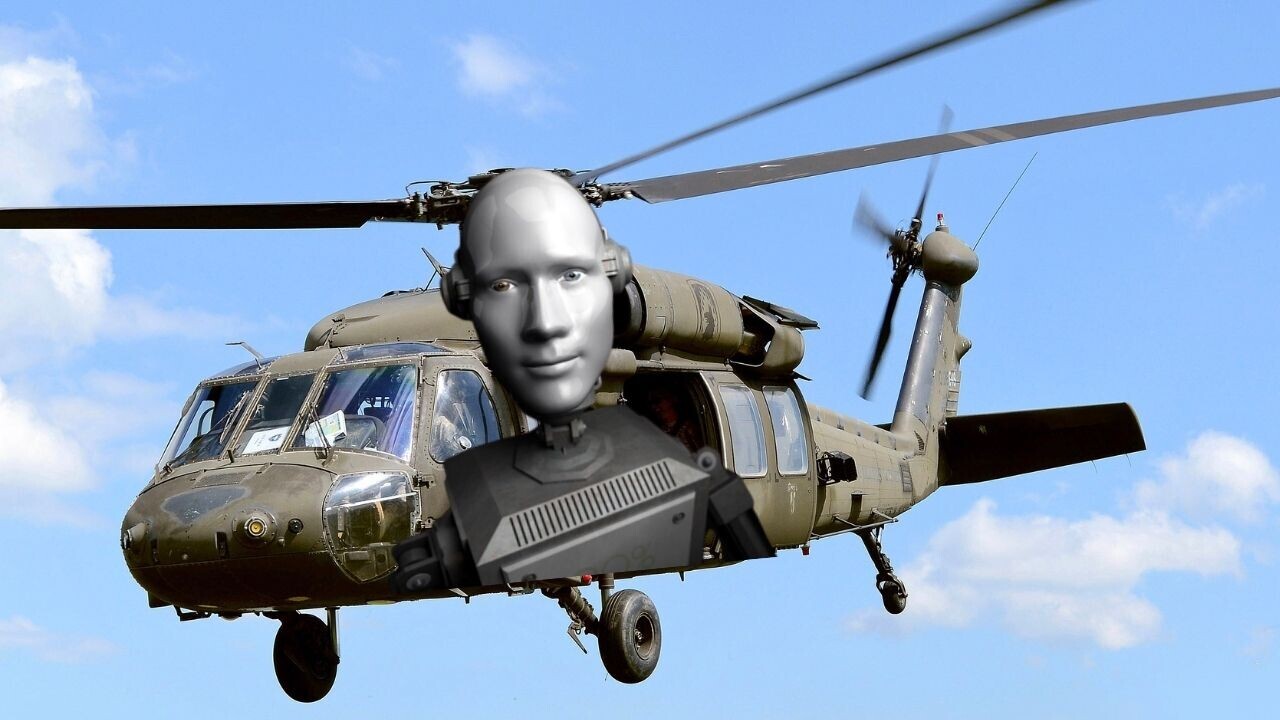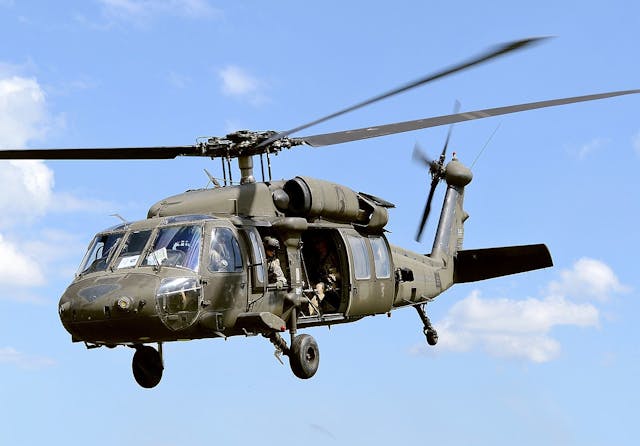Exactly How the Blackhawk Helicopter Came To Be an Icon of Military Stamina and Flexibility
Exactly How the Blackhawk Helicopter Came To Be an Icon of Military Stamina and Flexibility
Blog Article
Revealing the Power and Versatility of the Blackhawk Helicopter
The Blackhawk helicopter stands as a testimony to engineering excellence and army development, dramatically shaping the landscape of modern aerial operations. Initially established in the late 1960s, this dual-engine airplane has advanced right into a diverse platform with the ability of performing a series of missions, from tactical troop deployments to urgent medical emptyings. Its style incorporates sophisticated innovation and products, improving both performance and survivability. As we discover its history and operational capabilities, one have to think about exactly how the Blackhawk proceeds to influence contemporary battle strategies and altruistic initiatives alike. What does this mean for the future of armed forces aviation?
History of the Blackhawk
The background of the Blackhawk helicopter is marked by substantial technical developments and a tactical evolution in military aeronautics. Created in the late 1960s by Sikorsky Airplane, the UH-60 Blackhawk was originally conceived to replace the older UH-1 Iroquois, frequently known as the "Huey." The Blackhawk's very first trip occurred in 1974, and it was officially presented to the U.S. Military in 1979.


This aircraft was made to fulfill the requiring demands of contemporary war, focusing on adaptability, resilience, and rate (Blackhawk Helicopter). Its capability to operate in various settings, paired with sophisticated avionics and design functions, swiftly established the Blackhawk as an essential possession for armed forces procedures worldwide
Throughout the 1980s and 1990s, the Blackhawk saw extensive usage in various problems, including the Gulf Battle and humanitarian objectives. The helicopter's adaptability permitted it to offer numerous roles, from army transportation to medevac and logistical assistance. As innovation advanced, so did the Blackhawk, resulting in numerous variants that dealt with certain objective demands. Today, the Blackhawk stays a legendary icon of army aviation, continuously improved to fulfill contemporary obstacles.
Key Attributes and Requirements
Blackhawk helicopters are renowned for their design excellence and functional convenience, flaunting a variety of key functions and specifications that improve their performance in various armed forces roles. Among one of the most significant characteristics is their dual-engine configuration, usually powered by the T700-GE-701C engines, which provide phenomenal integrity and efficiency. The helicopter has an optimum cruise ship speed of around 150 knots and a solution ceiling of approximately 20,000 feet, allowing it to run effectively in diverse environments.
The Blackhawk's airframe is built from advanced composite products and aluminum alloys, guaranteeing a durable structure while reducing weight. It features a fully expressed blades system that supplies superior agility and stability. The helicopter can accommodate up to 11 fight troops or carry up to 8,000 pounds of exterior cargo, making it very versatile for various goals.
Additionally, the Blackhawk is outfitted with advanced avionics and interaction systems, boosting situational recognition and mission coordination. Its capability to run in unfavorable climate condition, integrated with its low acoustic trademark, makes it a stealthy option for tactical operations. Overall, these attributes add to the Blackhawk's reputation as a cornerstone of modern-day army aeronautics.
Versatile Operational Duties
Renowned for their engineering quality and advanced capacities, Blackhawk helicopters offer a plethora of operational roles within armed forces frameworks. Originally created for troop transport, their adaptability has actually broadened, allowing them to carry out numerous goals effectively.
One of the key roles of the Blackhawk is as an energy helicopter, assisting in logistical assistance by transferring personnel and supplies to and from remote places. Additionally, they stand out in clinical discharge (MEDEVAC) operations, outfitted with sophisticated medical devices and YOURURL.com personnel to supply crucial care in the area.
In fight scenarios, Blackhawks can run as armed companion systems, supporting ground forces by involving adversary properties while making certain troop safety. Their ability for unique operations makes them indispensable; they can conduct reconnaissance missions, workers healing, and straight action raids, typically in high-threat atmospheres.
Furthermore, the Blackhawk's adaptability allows it to support altruistic objectives and disaster reaction initiatives, delivering help and vital services in times of dilemma. This wide range of operational roles shows the Blackhawk helicopter's unrivaled flexibility, reaffirming its condition as an important asset in modern military procedures worldwide.
Technical Developments
Various technological technologies add to the Blackhawk helicopter's exceptional performance and flexibility in varied operational atmospheres. Among one of the most substantial improvements is its composite rotor blades, which improve lift and ability to move while reducing weight and upkeep demands. The blades system utilizes advanced materials that boost longevity and stand up to environmental degradation, ensuring reputable procedure in severe conditions.
In Addition, the Blackhawk is outfitted with a modern avionics suite that integrates innovative navigating and interaction systems - Blackhawk Helicopter. This consists of GPS, radar, and multi-function display screens that facilitate real-time situational recognition for pilots, adding to objective success under challenging circumstances
Furthermore, the helicopter's fly-by-wire control system enables for accurate handling and enhanced responsiveness, providing pilots with improved control during facility maneuvers. The consolidation of innovative engine technology, such as the T700-GE-701C engine, more boosts performance, using increased power output and gas effectiveness.
Last but not least, modular design concepts allow quick reconfiguration for various goals, from army transport to clinical evacuation, making the Blackhawk a functional property in military and humanitarian procedures. These technological developments collectively make certain that the Blackhawk remains a formidable visibility overhead.
Influence on Modern War

Furnished with advanced avionics and interaction systems, the Blackhawk makes it possible for smooth sychronisation amongst ground and air devices, guaranteeing prompt and exact action to vibrant fight situations. Its versatility enables fast deployment in diverse settings, from city settings to tough terrains, showing the complex nature of review contemporary war.
Additionally, the Blackhawk's premium speed and agility assist in quick insertion and extraction of workers, decreasing exposure to enemy fire. Its capability to operate in hostile problems, coupled with innovative protective actions, enhances survivability and goal success rates.
As contemporary conflicts significantly rely upon joint operations and quick response, the Blackhawk helicopter continues to be at the center of military technique, reference symbolizing the evolution of air wheelchair and the important function of air power in attaining critical goals. Its influence on modern-day warfare remains to redefine the capacities of militaries globally.

Conclusion
In verdict, the Blackhawk helicopter exhibits the junction of advanced engineering and functional versatility, solidifying its condition as a keystone of modern armed forces aeronautics. Its historic significance, amazing attributes, and adaptability across different goal accounts underscore its important duty in contemporary warfare. As technical innovations continue to enhance its abilities, the Blackhawk continues to be an important possession for militaries around the world, demonstrating unequaled performance in both battle and altruistic operations.
The Blackhawk helicopter stands as a testament to engineering excellence and army development, substantially forming the landscape of contemporary aerial operations.The background of the Blackhawk helicopter is noted by considerable technological developments and a calculated development in military aeronautics.Blackhawk helicopters are renowned for their design quality and operational convenience, flaunting a variety of crucial attributes and specs that improve their efficiency in numerous army duties.Many technological developments add to the Blackhawk helicopter's outstanding performance and flexibility in diverse functional atmospheres.In final thought, the Blackhawk helicopter exhibits the crossway of advanced design and operational flexibility, strengthening its condition as a foundation of modern military air travel.
Report this page